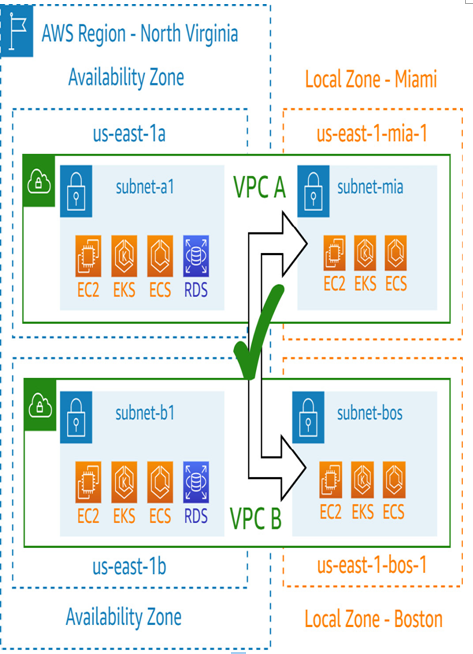Where AWS Route53 manipulates DNS responses, AWS Global Accelerator utilizes IP anycast to improve the availability and performance of applications. AWS Global Accelerator uses static anycast IP addresses to route user traffic to the optimal AWS endpoint based on proximity, health, and routing policies:

Figure 6.22 – AWS Global Accelerator using one IP for three locations
This means that if you have application replicas in multiple AWS Local Zones or regions, Global Accelerator will route a user’s request to the closest and healthiest replica. Global Accelerator ensures that the user experiences low latency and high reliability by always being directed to the nearest and best-performing AWS location, which could be an AWS Local Zone if that is what makes sense in the situation.
Traffic between AWS Local Zones
Customers developing globally distributed architectures that leverage AWS Local Zones to extend their application’s presence closer to end users sometimes wish to route traffic between two AWS Local Zones. For instance, a customer who builds a VPN service may wish to allow a customer to route in through a gateway on an EC2 instance in Miami and out a similar gateway in Boston.

Figure 6.23 – AWS Local Zone subnets in the same VPC are blocked
In the same way two AWS Outpost rack deployments in the same VPC cannot communicate through the parent region, AWS Local Zones face the same restriction for similar reasons. The next figure illustrates the proper architecture to allow this type of communication:

Figure 6.24 – Traffic between AWS Local Zones allowed across different VPCs
Summary
In this chapter, we covered how AWS Local Zones meet customer needs for low latency to enhance real-time data interactions, ensuring data remains within specified geographic confines and easing the migration process of on-premises applications to the cloud. It also covered its differences with AWS Outposts and how AWS Local Zones bring AWS services closer to end users without the overhead of infrastructure management.
We also covered methods for connecting on-premises data centers via AWS Direct Connect. This included a discussion of the available options depending on a customer’s requirements for security, availability, performance, and cost. The chapter wrapped up by exploring how AWS Route53 and AWS Global Accelerator can be used to steer traffic from users on the internet into AWS Local Zones.
In the next chapter, we will explore a similar service that physically resides inside the 5G core of mobile carriers around the world—AWS Wavelength.

